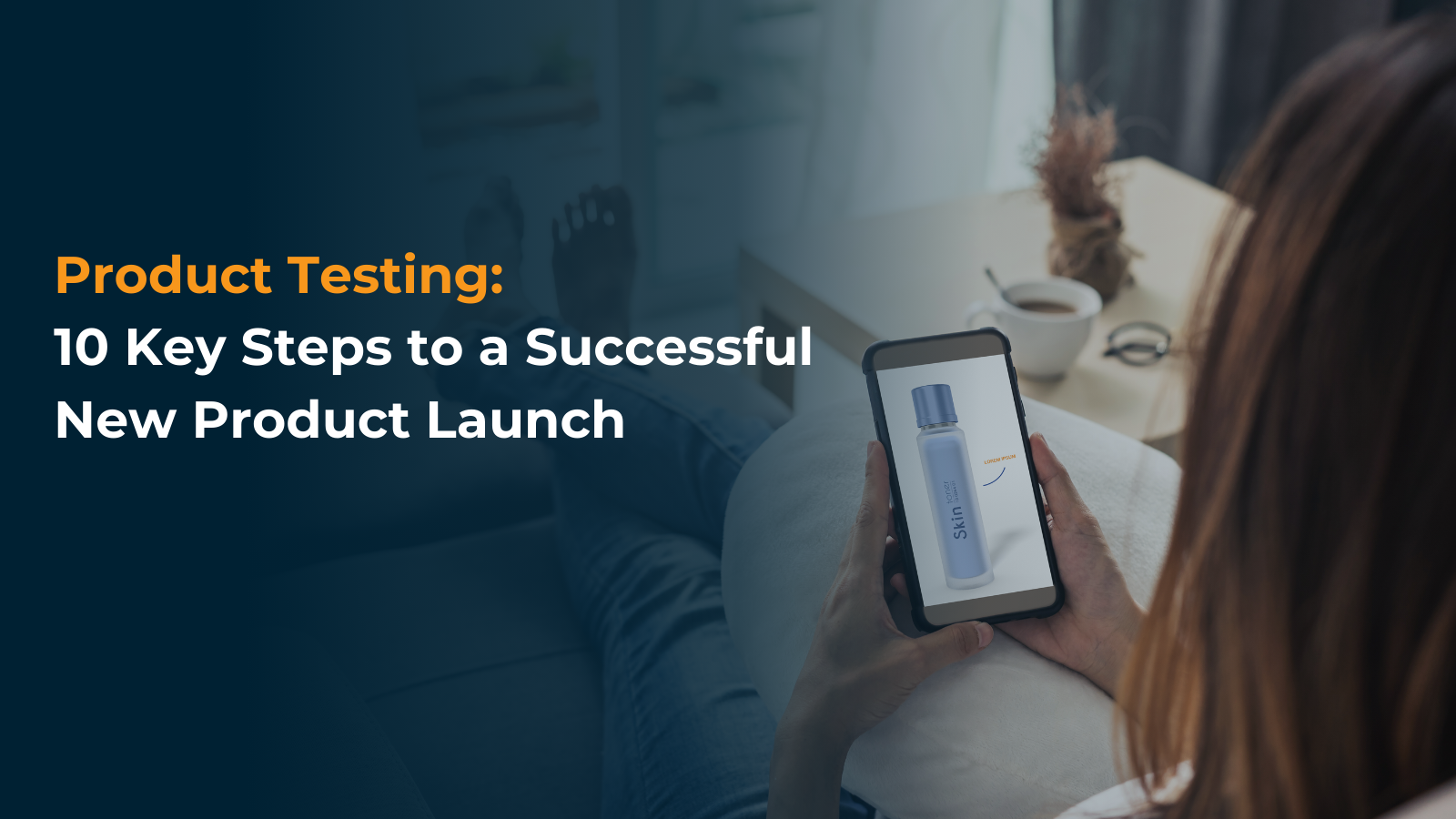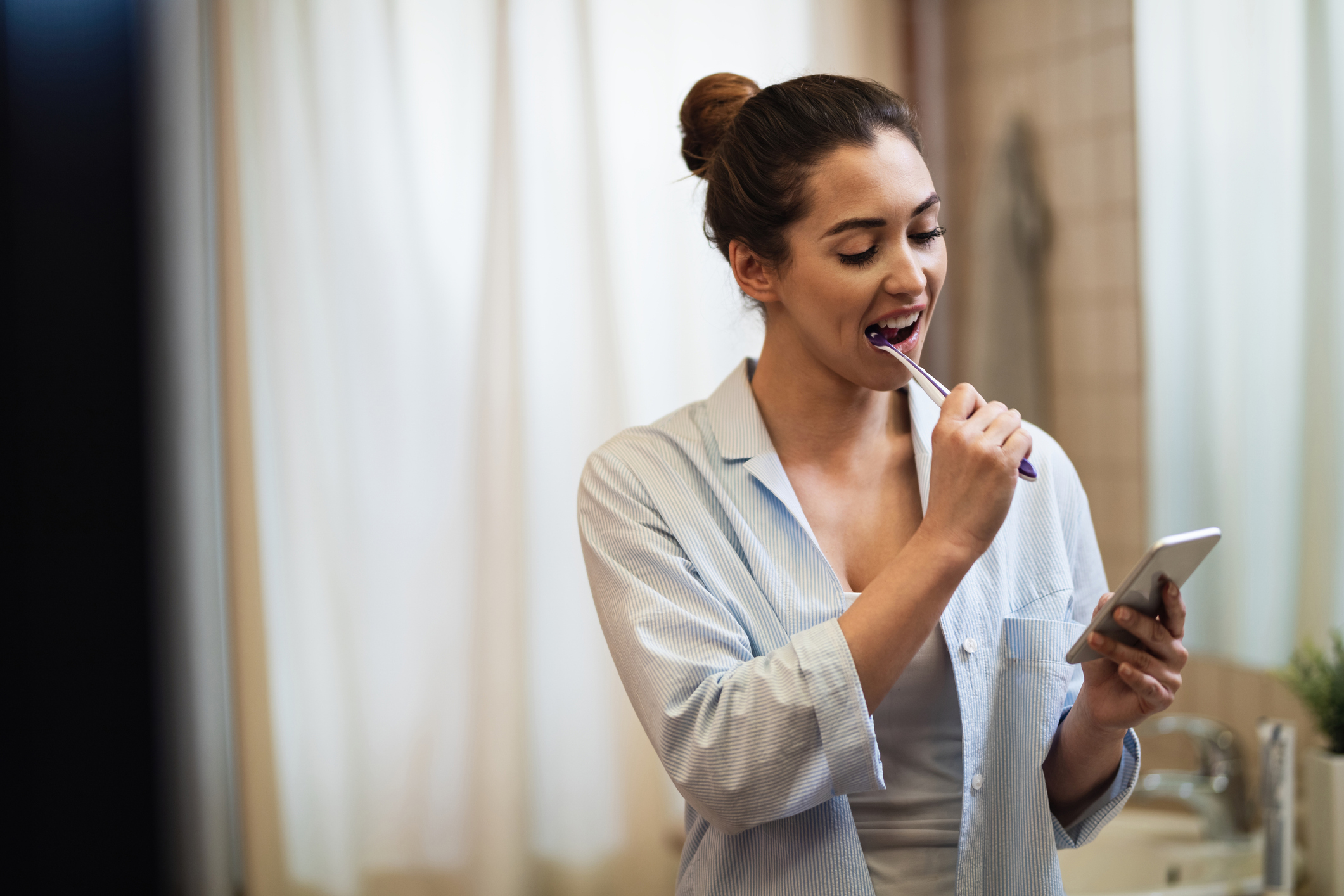Product Testing: 10 Key Steps to a Successful New Product Launch

The odds for new consumer products are daunting: most will fail, quietly dropping off the market within their first few years. Almost none go on to become household names.
So, it’s reasonable to be apprehensive when you dream up an idea for a new product that you think will address a gap in the consumer market. Smart researchers understand that it’s valuable to conduct consumer product testing to get detailed feedback on products prior to launch.
These 10 steps will show you how to test a product before launch. Looking for more information about the what, when, and why of product testing? We’ve got you covered.
1. Recruit the right sample.
You need to test your product with ordinary shoppers — but how do you find them? You might partner with a market research firm or vendor, or you might recruit study participants directly. Either way, be sure you’re sourcing a diverse sample of consumers who match your target audience. But don’t limit yourself too much at this stage: your audience for this new product may not be exactly who you think it is.
2. Test your initial product concept.
Once you’ve sourced consumer product testing participants, see what your participants think of your idea. For example, you could ask them:
- Is this a product they want to have in their own home?
- How often would they use this product?
- Can they think of any other ways they’d like to be able to use this product?
- What aspect of this product concept are they most excited about?
- What are they willing to pay for this new product?
3. Use consumer feedback to create a prototype.
When you’ve identified the features of a winning concept, it’s time to move from ideas to reality.
Review your findings with your product development team and design at least one prototype. You could also design several prototypes to investigate different possibilities.
4. Send your prototype to participants for at-home product testing.
When you have your prototype (or prototypes) in hand, you’re ready to send them out into the world for new product testing.
Sure, you could use focus groups to test your new product in a centralized location like a research office. But you’re likely to learn more from at-home product testing for three reasons:
- It’s more realistic. In-home usage testing (or IHUT) lets study participants interact with products naturally, in their own homes — the same way real consumers will eventually use your products.
- It gives you more data. When testing new products at home, you can collect data around the clock for several days or even several weeks.
- It’s more flexible. Did you design three different prototypes from your product concept tests? Test those prototypes head-to-head with the same audience by sending all of them to your study participants for random-order sequential testing.
5. Capture initial impressions with qualitative video.
Before your testers start using your new product, have them walk through a product unboxing with you. You want to learn what their first impressions are before they fall in (or out of) love with your product. Conduct sensory testing where you ask participants to describe their experience with your product prototype. For example, you might ask:
- Does this food or drink look appealing in the package? What about when it’s served?
- Does this cleaning solution have a pleasant smell? Is the odor too strong or just right?
- How does the bottle or packaging feel? Is it a manageable size? How is its texture?
- Did their first experience of this product meet their expectations? If not, what was different?
6. Gather quantitative data as study participants use your product.
Okay, your study participants have your product prototype and they’ve shared their first impressions. What happens next? It’s time to find out.
You don’t even have to wait for participants to fill in surveys or send you information; smart sensors enable you to passively collect real-time quantitative data as study participants use your products. Find out how many times a tester picks up your laundry detergent and how much they dispense at a time — automatically.
7. Explore your results by collecting qualitative feedback.
Collecting precise, accurate quantitative data is great, but what does that data mean?
Find out by prompting your study participants to send in qualitative video feedback. Mobile phones make it easy for testers to shoot a quick, chatty video describing their experience so far and answering a few targeted questions. You might ask:
- What led you to pick up this product right now?
- Was the bottle or package easy to grasp, open, and dispense?
- Did the product meet your needs?
- Did you enjoy using it?
- Is there anything you wish were different about this product?
- Do you look forward to using it again?
8. Iterate! Revisit your prototypes and refine your new product design.
Use the data you’ve gathered to adapt your product prototypes. As you review your qualitative data, take advantage of the video format to pay close attention to your testers’ nonverbal cues. Ask your team to consider questions such as:
- Did any common themes emerge from sensory or usage testing?
- Did your product meet testers’ expectations?
- Did you observe any moments of authentic delight?
- What aspects of the product were particularly satisfying?
- How could you address any suggested improvements?
Send new product designs out to study participants for further testing until you think you’ve nailed the formula and packaging.
9. Determine the best marketing angle for your new product.
Even great products can fail if they’re marketed the wrong way. Use the qualitative data you’ve gathered to identify the most compelling marketing pitch. Bear in mind that different audiences may be drawn to different messages. If possible, test your ideas with the same panel of study participants to ensure that the messaging you’ve crafted resonates with their experience.
10. Launch your product (successfully).
It’s game time. You have all of the information you need to make your new product launch a success. Now get out there and collect those actionable insights.
Need more information about how to test a product before launch?
Don’t launch your next new product without first vetting it using consumer product testing.
At QualSights, we’ve designed an innovative approach to at-home product testing: our always-on, always-connected Smart Sensors. These compact devices pack a punch, collecting precise, accurate quantitative data every time a study participant interacts with a product. And our intuitive, award-winning Participant App lets research teams follow up with testers to explore their thoughts, feelings, and impressions in the moment, before the experience fades into memory.
Whatever new product you’re envisioning, QualSights has the market research tools and expertise you need to bring that dream to life. Contact us today to learn more.
 Product Testing
Product Testing 

